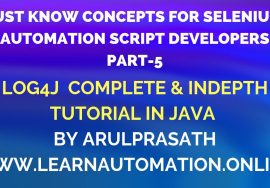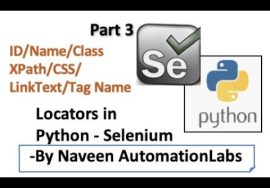TensorFlow 2.0 Complete Course – Python Neural Networks for Beginners Tutorial
Learn how to use TensorFlow 2.0 in this full tutorial course for beginners. This course is designed for Python programmers looking to enhance their knowledge and skills in machine learning and artificial intelligence.
Throughout the 8 modules in this course you will learn about fundamental concepts and methods in ML & AI like core learning algorithms, deep learning with neural networks, computer vision with convolutional neural networks, natural language processing with recurrent neural networks, and reinforcement learning.
Each of these modules include in-depth explanations and a variety of different coding examples. After completing this course you will have a thorough knowledge of the core techniques in machine learning and AI and have the skills necessary to apply these techniques to your own data-sets and unique problems.
⭐️ Google Colaboratory Notebooks ⭐️
? Module 2: Introduction to TensorFlow –
? Module 3: Core Learning Algorithms –
? Module 4: Neural Networks with TensorFlow –
? Module 5: Deep Computer Vision –
? Module 6: Natural Language Processing with RNNs –
? Module 7: Reinforcement Learning –
⭐️ Course Contents ⭐️
⌨️ (00:03:25) Module 1: Machine Learning Fundamentals
⌨️ (00:30:08) Module 2: Introduction to TensorFlow
⌨️ (01:00:00) Module 3: Core Learning Algorithms
⌨️ (02:45:39) Module 4: Neural Networks with TensorFlow
⌨️ (03:43:10) Module 5: Deep Computer Vision – Convolutional Neural Networks
⌨️ (04:40:44) Module 6: Natural Language Processing with RNNs
⌨️ (06:08:00) Module 7: Reinforcement Learning with Q-Learning
⌨️ (06:48:24) Module 8: Conclusion and Next Steps
⭐️ About the Author ⭐️
The author of this course is Tim Ruscica, otherwise known as “Tech With Tim” from his educational programming YouTube channel. Tim has a passion for teaching and loves to teach about the world of machine learning and artificial intelligence. Learn more about Tim from the links below:
? YouTube:
? LinkedIn:
—
Learn to code for free and get a developer job:
Read hundreds of articles on programming:
And subscribe for new videos on technology every day:











Let me know what you guys think of the course?! Took a lot of preparation and work to get this out for you guys. Hope you all enjoy and get a solid foundation in the world of machine learning 🙂
It’s an amazing course Tim
You’re awesome
Fare seems to be the percentage of survival relating to their category class, higher % A to lesser C.. and other categories affect them
@Kabutey can u tell me how to feed a single row of customised titanic. Csv to check for out prediction using logistic regression. The video shows how to fetch the percentage of probability. So if I need to feed an input of my own how do I do it. Do u know??
28:28 the Reinforcement machine learning it’s like training a ? lol. I am not tech savvy but I was just wondering about and I found your video. But 1thing I have learnt from ur video if not anything is that reinforcement machine learning is like dog training.
‘I’m sorry I’m talking a lot but…’
Bro, it’s a 7 hour TensorFlow tutorial, I didn’t expect anything less! Awesome tutorial, thanks man
@Aparup Ganguly ???
can u tell me how to feed a single row of customised titanic. Csv to check for out prediction using logistic regression. The video shows how to fetch the percentage of probability. So if I need to feed an input of my own how do I do it. Do u know??
it’s a compilation of all his videos on AI
@Sadece Deniz depend on your laziness.
@Sadece Deniz 4 hours
Timestamps for all the different core learning algorithms,
Linear Regression (01:00:00)
Classification (01:54:00)
K-Means Clustering (02:17:07)
Hidden Markov Models (02:24:56)
@Prasad Dalavi I am also in doubt about that
@Manav Patnaik Even if your output is the probability of getting 1 0r 2 it will still consider as a classification estimator. Cuz in reality classification Just predicts the probability of getting 1 0r 0 (with the help of sigmoid function).
@Prasad Dalavi Its classification, he uses the Classification estimator. No idea why he called it regression. Maybe because his final output is the probability and not the class (0 or 1)
Hey just to confirm, are you sure the 1:00:00 is the linear regression and not linear classification. i am not able to get this. we are classifying whether it will be survived or not. based on the input data. can some one please help with this
*My takeaways:*
1. TensorFlow has two main components: graph and session 33:05
2. We can rebuild a model and change its original parameters 5:56:31
3. Reinforcement learning with Q-Learning 6:08:00
⌨️ Module 1: Machine Learning Fundamentals (00:03:25)
⌨️ Module 2: Introduction to TensorFlow (00:30:08)
⌨️ Module 3: Core Learning Algorithms (01:00:00)
⌨️ Module 4: Neural Networks with TensorFlow (02:45:39)
⌨️ Module 5: Deep Computer Vision – Convolutional Neural Networks (03:43:10)
⌨️ Module 6: Natural Language Processing with RNNs (04:40:44)
⌨️ Module 7: Reinforcement Learning with Q-Learning (06:08:00)
⌨️ Module 8: Conclusion and Next Steps (06:48:24)
Too much screen display displacement (up/down) : it is disturbing
@Sandesh Adhikari If you have a tab you can colab runs on browser
@K R bro either use python 3.8 version or
@Sandesh Adhikari yes brother. Use google colaboratory which is a free notebook which does not use your local computer. It means, you just need to have a laptop that runs browser and has a internet.
@Ruturaj Ghodke hi
I really, really enjoyed this tutorial . It takes the time to explain soo many aspects and has a great build up. Well done!
Just wanted to add one small detail that in Module 4, while training the model on 1 epoch after training it for sometime, what actually happens in ipython notebooks is that they continue training on above of the previously trained model. So, that is why we got pretty high accuracy for one epoch, but technically that accuracy we got was not just from one epoch.
@Lawrence Granda I was watching this and even though I am totally newbie I also noticed that the training was simply continuing, not starting from scratch.
I agree. He did not restart/rebuild the model, so it just kept training using the previous weights
Are you sure? Adding on one epoch to that model made a significant jump from its previous accuracy. I don’t believe this is the case.
Just a comment, on 3:36:44, when you train the network again it’s not re-training from scratch but instead using the weights it already had. Unless you manually reset the graph, you’ll be training for the sum of all epochs you used the fit function (like 10 + 8 + 1 epochs)
To avoid this problem you should use something like keras.backend.clear_session() or tf.reset_default_graph() between tests with hyperparameters ?
Another way is just to rebuild the model.
Mm thought that was the case. Wasn’t starting from the ~80% accuracy from the first epoch of the latter training runs.
this was painful to watch yeah.. i know he’s doing his best to show stuff but he’s pretty much a beginner too
Thanks for this amazing course ! It’s super interesting, clear explanations, it’s a perfect starting point to machine learning with Tensorflow !
Very amazing! Mainly i was looking for special explanations about reinforcement learning using a conventional NN, but when i found this this seemed to be an interesting start to Machine Learning. Thank you very much for this huge amount of work and research done and the possibility to get deeper in the matter with NNs for free! A big like!
This video is a must-watch for beginners getting into machine learning. I wish I had seen this video before. I have never got a better understanding of these topics and the differences between the terms AI, Machine Learning, etc. Thank you, sir, for your efforts.
I am in class 12, and there is Linear Regression in Mathematics, but I haven’t even thought that it can be used in ML also.
Just curious to know, what are u doing now dude? i mean in programming area
Loved it! Great tutorial covering a lot of areas. TechWithTim’s explanation and the epic examples help open up the field to beginners like me, and the 7 hours were super-interesting!
Well, I’m Batman.
Really excellent tutorial. The explanations are great and the material was very well put together. Thanks so much Tim. So many many great helper functions.
It is a really amazing video, I learned a lot! Thank You very much!
I would like to ask, which might be interesting for others as well:
How is it possible to get out the parameters for the equation, after training in the case of the Titanic dataset (see from 1:13:00)?
I assumed, that the linear regression model looks like this:
(I hope the “LinearClassifier” using the same.)
y = b0 + b1*x1 + b2*x2 + … + b9*x9 + e
y: dependert variable (‘survived’)
x1 … x9: independent variables
b0: an estimate of the regression intercept
b1 … b9: an estimate of the regression slope = coefficients
e: error term
-> How can I get to know the b0 … b9? So I can use it in a simple program 🙂
You’re an ace Tim! Thanks for taking the time to share what you’ve learned with the rest of us!
Amazing tutorial with really good explanations and drawings to understand basics. It is exactly what I was looking for with my level in Python and AI. I will definitely subscribe for more turorials 🙂
Great in-depth explanation. The flow of topics was also great. Helped me to get a solid foundation of concepts. Thanks a lot for this.
48:00 rank
50:00 shape
52:00 change in shape
55:10 types of tensors
56:30 evaluating Tensors
57:25 sources
57:40 practice
1:00:00 tensorflow core learning algorithms
1:02:40 linear regression
1:13:00 setup and import
1:15:40 data
Just finished the tutorial, it’s really well made and an amazing intro to ML concepts. I’m really excited to explore this further thankyou so much Tim.
It’s really amazing tutorial. Great work in bringing all the content together and explaining it in detail.